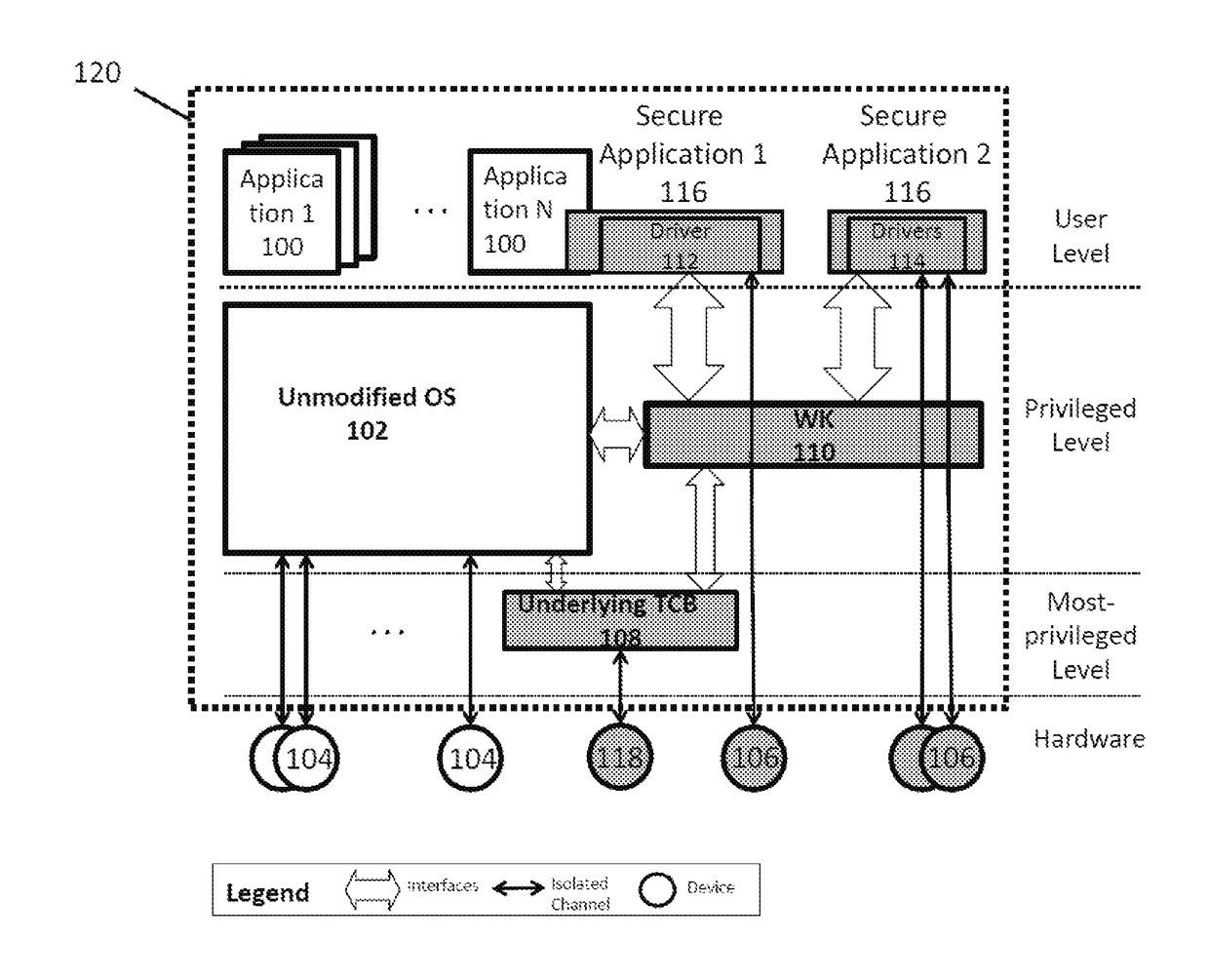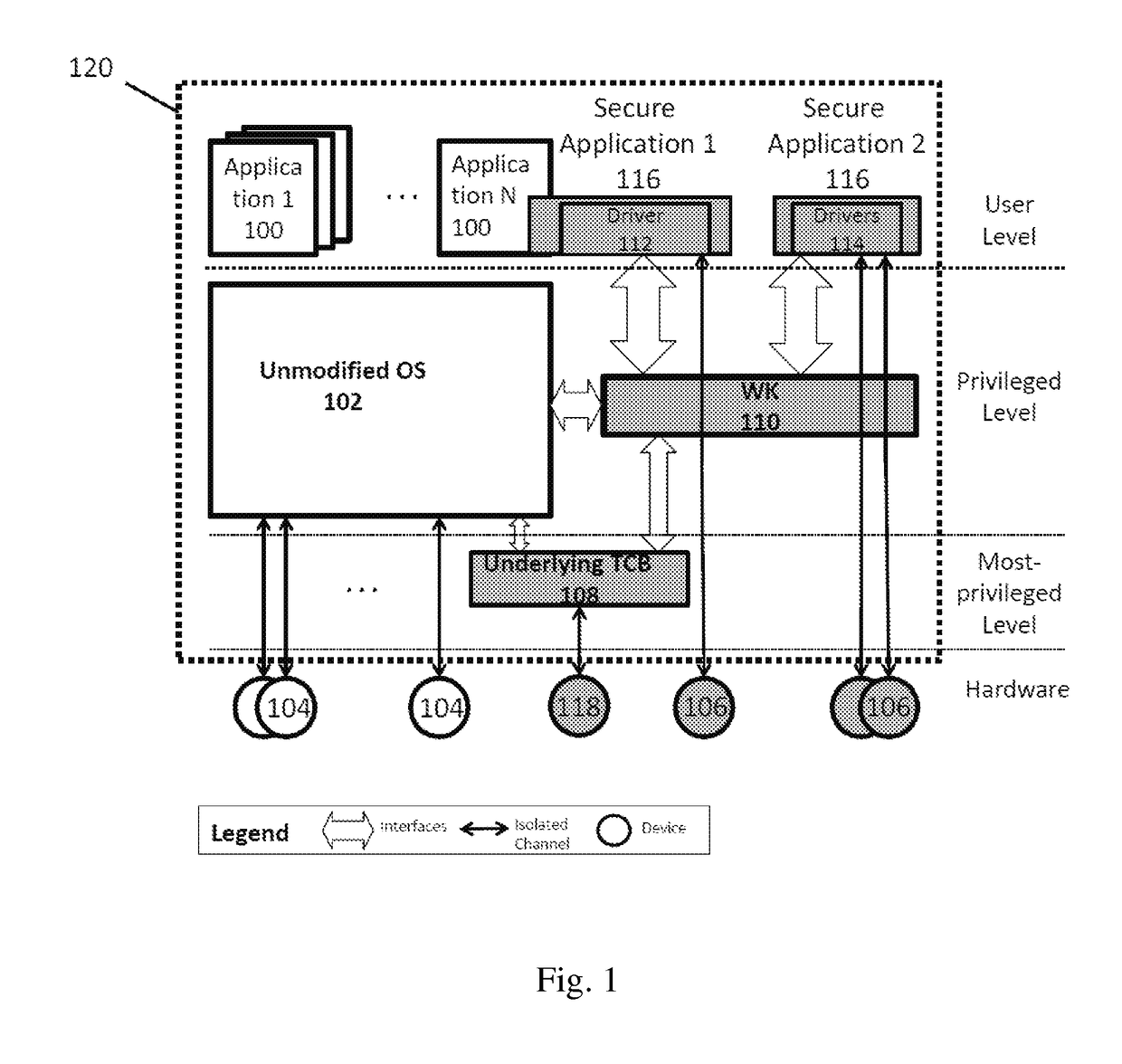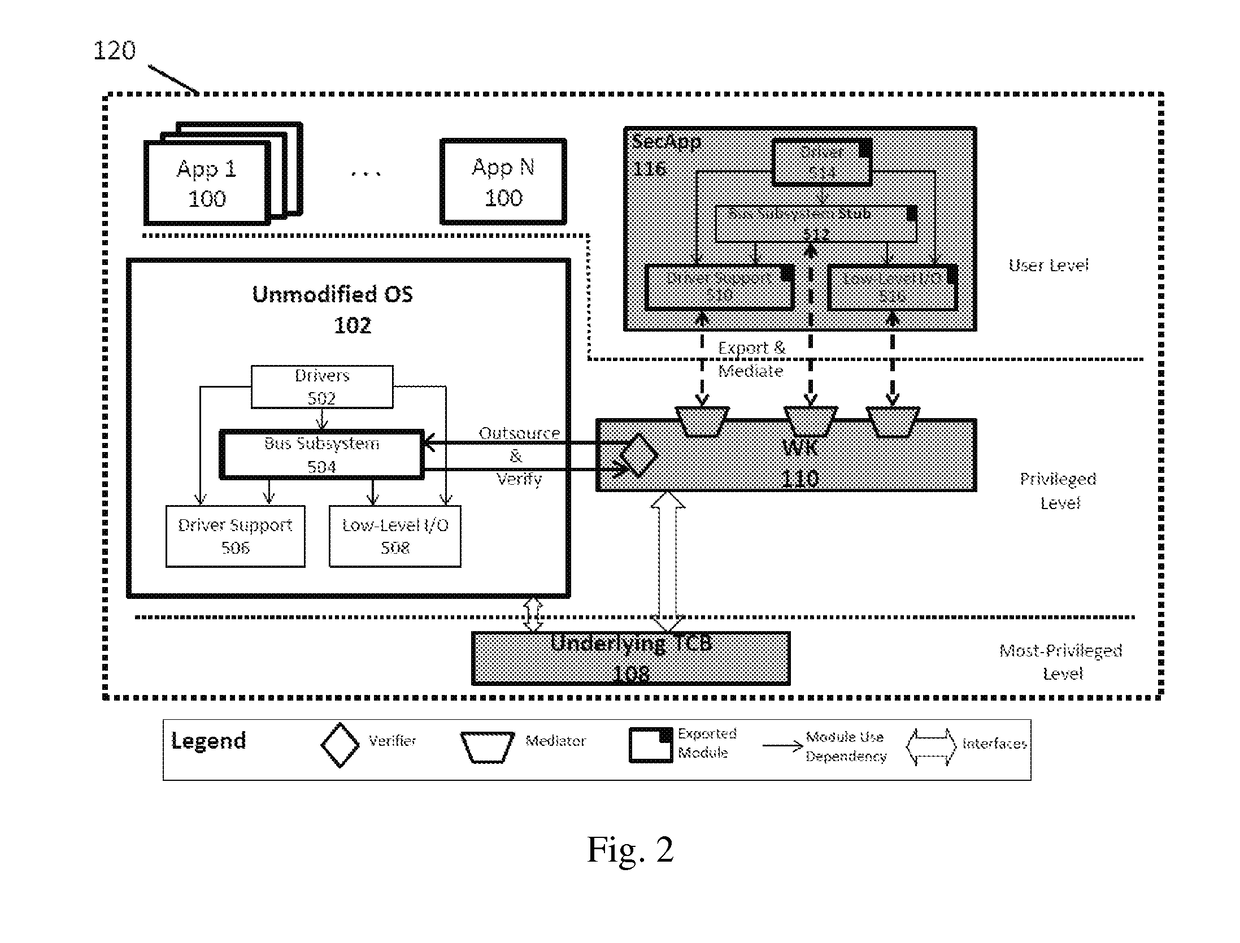Method and Apparatus for On-Demand Isolated I/O Channels for Secure Applications
a secure application and isolated i/o technology, applied in the field of methods and apparatus for on-demand isolated i/o channels for secure applications, can solve the problems of reducing the code base, reducing and unable to include a variety of basic services available, so as to reduce the size and complexity of the tk , the effect of minimizing the tk
- Summary
- Abstract
- Description
- Claims
- Application Information
AI Technical Summary
Benefits of technology
Problems solved by technology
Method used
Image
Examples
embodiment
Preferred Embodiment
1. The Underlying TCB
[0161]In one embodiment, the present invention works on x86 micro-architecture with multi-cores and uses micro-hypervisor as an example of the underlying TCB. Micro-hypervisor runs at the most-privileged level of the platform and can create multiple isolated domains. Micro-hypervisor also fulfills all the required properties listed in the previous section. In the best mode of implementation, the present embodiment adds two more interfaces in the underlying TCB: registration of the TK and unregistration of the TK.
2. The TK
[0162]The present embodiment implements the TK that provides on-demand I / O channel isolation to USB 2.0 devices using the Enhanced Host Controller Interface (EHCI) host controller driver, and adds the USB hierarchy verification and transfer descriptor (TD) verification algorithm. The present embodiment uses x86 fast system call instructions to implement TKcall for secure applications. Also, the present TK uses IPIs and shared...
PUM
 Login to View More
Login to View More Abstract
Description
Claims
Application Information
 Login to View More
Login to View More - R&D
- Intellectual Property
- Life Sciences
- Materials
- Tech Scout
- Unparalleled Data Quality
- Higher Quality Content
- 60% Fewer Hallucinations
Browse by: Latest US Patents, China's latest patents, Technical Efficacy Thesaurus, Application Domain, Technology Topic, Popular Technical Reports.
© 2025 PatSnap. All rights reserved.Legal|Privacy policy|Modern Slavery Act Transparency Statement|Sitemap|About US| Contact US: help@patsnap.com



